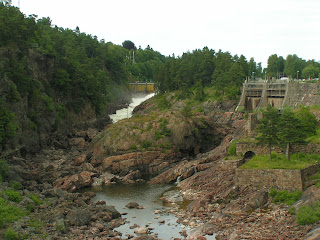I have a new hero and I bet you've never heard of him, unless you're Swedish.
Gustaf Dahlén: self-taught engineering genius and polymath, inventor of cookers and lighthouse equipment among many other things, one of the founders of AGA, and social visionary. Raised on a farm with no education beyond the basic that the village school could provide, he went on to create an engineering company with fingers in a thousand pies and which pioneered modern concepts like profit sharing and employee engagement.
The
Dahlén Museum in Stenstorp is retro-engineering heaven, and where else would you find a heart and lung machine with an AGA logo?
And wood and formica, and buttons to press and dials to turn. So many ...
Not to mention an actual AGA car (briefly manufactured in the 1930s) and, the thing that really made him famous, lighthouse equipment:
pre-electronic, pre-electrical and only requiring precision engineering and sound mechanical principles to work. Like his sun valve, a device powered only by thermal expansion to make sure lighthouse lights only came on at night, and which could also drive the rotation of the mechanism. The one installed in Stockholm harbour worked flawlessly until the 1980s without any servicing.
Sadly neither of those photograph particularly well in the museum.
Two things in particular that I like about him. One was that, as a teenager, he anticipated Wallace & Gromit by 100 years and invented a device that would turn on the light and the heating and make the coffee before he got out of bed in the morning. He was going to go one step further and make a device that would tilt the bed to get him out of it, but was talked out of it by his younger brother, who had to share the bed with him.
The other is that even though he was blinded for life at the age of 43, in an explosion while testing the pressure-holding capabilities of different types of cylinder, he was an incurable optimist. His motto was "Var Optimist" ("Be an optimist") and he had hundreds of badges made saying just that, which he would whip out and pin onto any prophet of woe that he might encounter.
It's purely coincidental that it looks like a line of code ...











